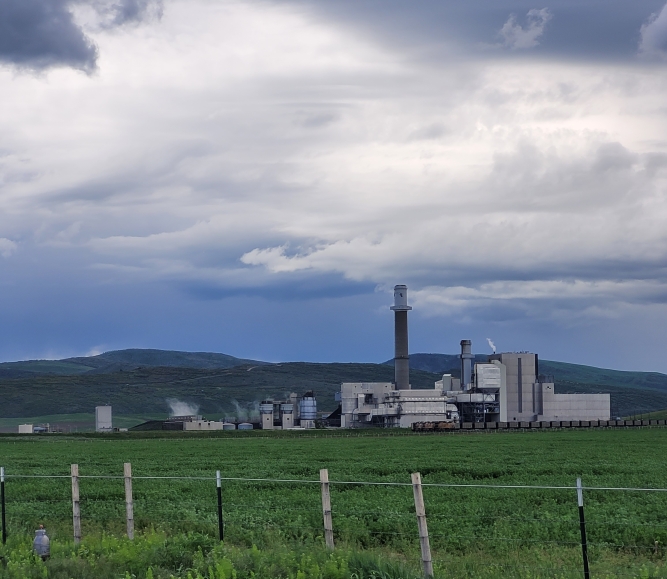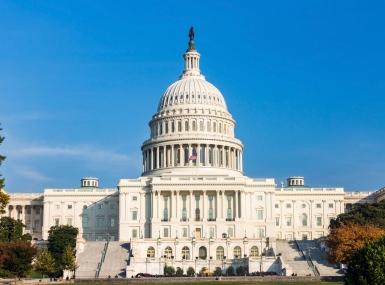For counties facing coal-fired power plant closures, learn from Lewis County, Wash.
Author
Upcoming Events
Related News

Lewis County is home to the only commercial coal-fired power plant in the state of Washington. The Big Hanaford Power Station opened in 1972 and is slated to be closed Dec. 31, 2025, among 173 U.S. coal-fired power plants scheduled to close over the next five years.
The economic impacts of these closures significantly alter the local property tax base for county governments and results in high-paying jobs being lost. Lewis County’s experience provides important lessons for communities working with utilities to manage these closures.
Lewis County Commissioner Sean Swope grew up in the county and over the past two years, he dove into economic diversification as a member of NACo’s BRECC Commitment Coalition. Below is a Q&A with him on the subject.
Can you provide background on the Big Hanaford Power Station and how it has shaped Lewis County?
Lewis County sits in the middle of the I-5 corridor between two major population hubs. We’ve always been more of a tourist destination. TransAlta has operated the coal-fired power plant since the 1970s and has been a huge asset for the community. The plant provided 300 people with well-paying jobs and contributed millions [of dollars] in property taxes to the county annually. I graduated from Centralia High and went to school with a lot of peers whose parents worked there. When the news of the power plant closure came in the early 2000s, there was a shift in the culture. We saw a thriving school district and community within months turn into a Depression-like era. The first couple of years after the announcement, our fire districts had to merge because of the lack of revenue and families were leaving the county to find employment.
What did the county do well to prepare for the power plant closure?
Lewis County developed a piece of industrial county-owned property called the Industrial Park at TransAlta (IPAT) in 2008, during the early phases of closure. The county invested $10 million into infrastructure improvements for the site and had that ready to go as we embrace an ‘all of the above’ energy strategy, embracing oil, natural gas, and simultaneously every other form of energy production (wind, solar, nuclear) to meet domestic energy needs. Establishing Lewis County as a federal Opportunity Zone and zoned as a port attracted power-producing industries into this area. The decision to invest in IPAT all the way back in 2008 allowed Lewis County to embrace the future.
What kinds of economic opportunities is Lewis County embracing?
There is a regional revitalization that’s happening right now. The director and commissioners with the Port of Centralia have focused on attracting different types of businesses, manufacturing and distribution businesses, to the region to spur development of the I-5 corridor. To complement this commercial development, Lewis County, through the creation of the Public Facilities District, has built a 110-acre sports facility that has eight full-size basketball courts and numerous ball fields. The Northwest Sports Hub has since hosted hundreds of tournaments across different sports, with families spending three to four days in Centralia for these tournaments. The kids don’t travel alone, parents and siblings often come along. Having these tournaments has really allowed us to build up our restaurant and shopping district.
What is one recommendation you have for fellow county leaders with coal-fired power plants in their counties?
Continue to build relationships with people everywhere. Part of Lewis County’s success is due to the great relationship that we’ve had with our state’s congressional delegation – who helped us secure our federal Opportunity Zone designation. Working alongside TransAlta [which owns the Big Hanaford Power Station] and partnering with our local economic alliance organization have been invaluable; as well as our representatives and state senator partnership, has really helped us to move forward. Success will come if you have the partners. I would also not give up on the coal infrastructure, specifically your transmission grid infrastructure, in your community. The question you should ask now is “What can you do now to pivot away from coal but still be able to produce energy in your area and your community?”
Advocacy
Coal Power Plant Closures Spur Regional Response in Northwest Colorado
The three counties that form the northwest corner of Colorado — Moffat, Rio Blanco, and Routt — share a history shaped by the coal, oil and natural gas industries. As the coal industry declines across the region, they now also share the same economic challenges.

Related News

U.S. House of Representatives passes SPEED Act and other permitting reform bills
On December 18, the U.S. House of Representatives passed the SPEED Act (H.R. 4776). The SPEED Act would strengthen county involvement in decision-making and make needed commonsense reforms to the federal environmental review process.

House Natural Resources Committee advances the Endangered Species Act Amendments Act of 2025
On December 17, the House Natural Resources Committee advanced the Endangered Species Act (ESA) Amendments Act of 2025 (H.R. 1897). The version passed by the committee adopted several changes from the initial bill and would address key county concerns by improving the implementation of the ESA. The legislation now awaits a floor vote before the whole U.S. House of Representatives.

Senators introduce bipartisan UPGRADE Act to support small and rural public water systems
On December 15, Sens. Lisa Blunt Rochester (D-Del.) and Roger Wicker (R-Miss.) introduced the Unincorporated Partnerships for Grant Resources, Assistance, and Drinking Water Enhancements (UPGRADE) Act (S. 3465), a bipartisan bill that would strengthen federal support for small public water systems and helps unincorporated communities access clean and affordable water.
